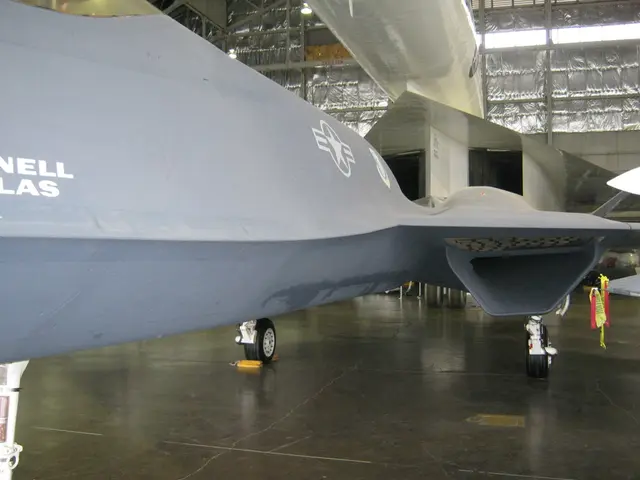Aircraft Icing Techniques in Flight Operations
Icing in Aviation: A Persistent Hazard and Its SolutionsBeware, aviation folk! Icing is a menacing enemy that can hinder your flight and potentially cause accidents. Icing happens when water droplets, colder than freezing, freeze upon striking aircraft surfaces. Here's a breakdown of the three main types of icing encountered in aviation:
- Clear ice is a thin, transparent layer that forms when supercooled water droplets freeze on aircraft surfaces. It's notoriously difficult to spot and can easily accumulate, severely disrupting airflow and reducing lift.
- Rime ice, on the other hand, is a white, opaque layer that forms a porous, granular structure when supercooled water droplets freeze. Although less harmful than clear ice, it can still reduce aircraft performance and increase drag.
- Mixed ice is a combo of the above two types, and it's the most prevalent icing form in aviation.
Icing conditions can arise in a multitude of atmospheric conditions, but they usually occur in clouds and precipitation between 0°C and -20°C, in high humidity areas with strong winds.
So, what's the harm in icing? Well, it can cause reduced lift, increased drag, weight gain, reduced control effectiveness, and even engine icing leading to engine failure. Yikes!
But fear not, aviators! There are ways to combat icing hazards. These strategies can be grouped under anti-icing and de-icing techniques.
Anti-Icing MethodsAnti-icing methods are proactive measures designed to prevent ice from forming on the aircraft in the first place.
- Thermal Bleed Air Systems utilize hot air bled from the engine compressors to warm critical surfaces like the wing leading edges and engine nacelles, preventing ice formation.
- Electro-Thermal Systems employ electric heating elements embedded in surfaces such as pitot tubes, static ports, and cockpit windshields to prevent ice buildup.
- TKS (Weeping Wing) Systems are used on smaller aircraft, where glycol-based fluids are pumped through tiny holes along the wing's leading edge to prevent ice from sticking to the surface.
- Anti-Icing Fluid Ejection via Slinger Ring is a method used on propeller aircraft where anti-icing fluid is distributed along propeller blades via a slinger ring to prevent ice formation.
De-Icing MethodsDe-icing methods are reactive techniques used after ice has already formed on the aircraft.
- De-Icing Fluids are special fluids applied to wings and control surfaces to remove existing ice and frost, usually done on the ground before flight.
- Thermal Bleed Air Systems (Dual Function) can also be used to de-ice, applying hot air to melt ice on critical surfaces.
These methods are instrumental in maintaining safe aerodynamic performance and preventing accidents due to icing conditions. Happy, safe flying, aviators!
References:* Federal Aviation Administration (FAA): Icing https://www.faa.gov/documentlibrary/media/advisory_circular/ac_91-74b.pdf* National Aeronautics and Space Administration (NASA): Icing https://aircrafticing.grc.nasa.gov/* Aircraft Owners and Pilots Association (AOPA): Icing https://www.aopa.org/training-and-safety/online-learning/safety-spotlights/weather-wise-precipitation-and-icing/icing* Transport Canada: Icing https://tc.canada.ca/en/aviation/publications/guidelines-aircraft-ground-icing-operations-tp-14052* International Civil Aviation Organization (ICAO): Icing https://en.wikipedia.org/wiki/Icing_conditions
- The science behind icing in aviation is a critical concern for the health-and-wellness of aircraft, as it can significantly impact aircraft performance and lead to potentially dangerous situations.
- In the transportation industry, finance plays a crucial role in the development and implementation of advanced therapies-and-treatments for combating icing, such as thermal bleed air systems, electro-thermal systems, and TKS systems.
- Anti-icing and de-icing techniques, used in airplanes for safe transportation, are essential components of aviation, helping maintain optimal aircraft performance and promoting a safer aviation industry.
- To ensure the continued advancement of icing solutions in aviation, extensively researchers in science and finance should collaborate to study emerging techniques and technologies, just as references from the Federal Aviation Administration (FAA), National Aeronautics and Space Administration (NASA), Aircraft Owners and Pilots Association (AOPA), Transport Canada, and International Civil Aviation Organization (ICAO) demonstrate.





